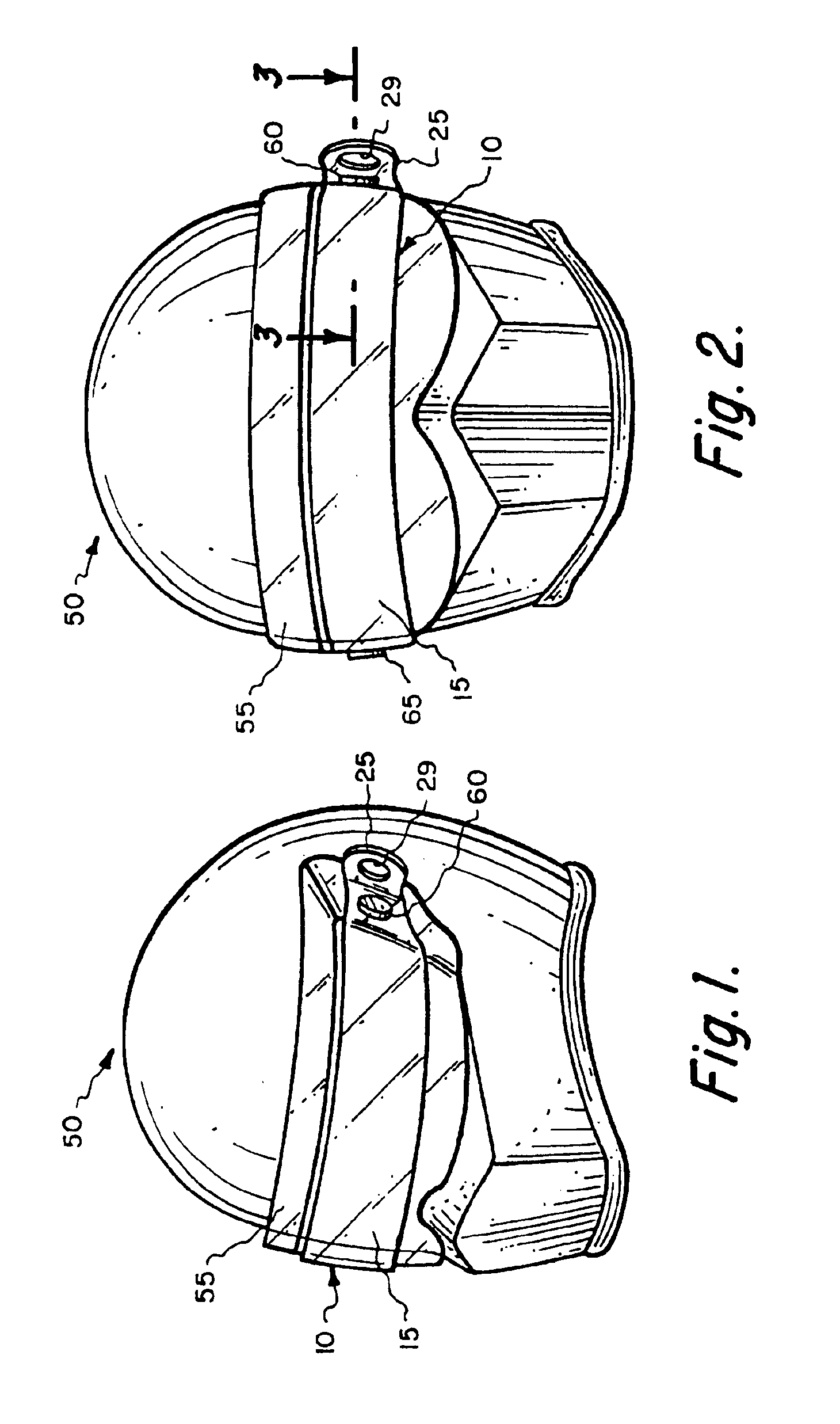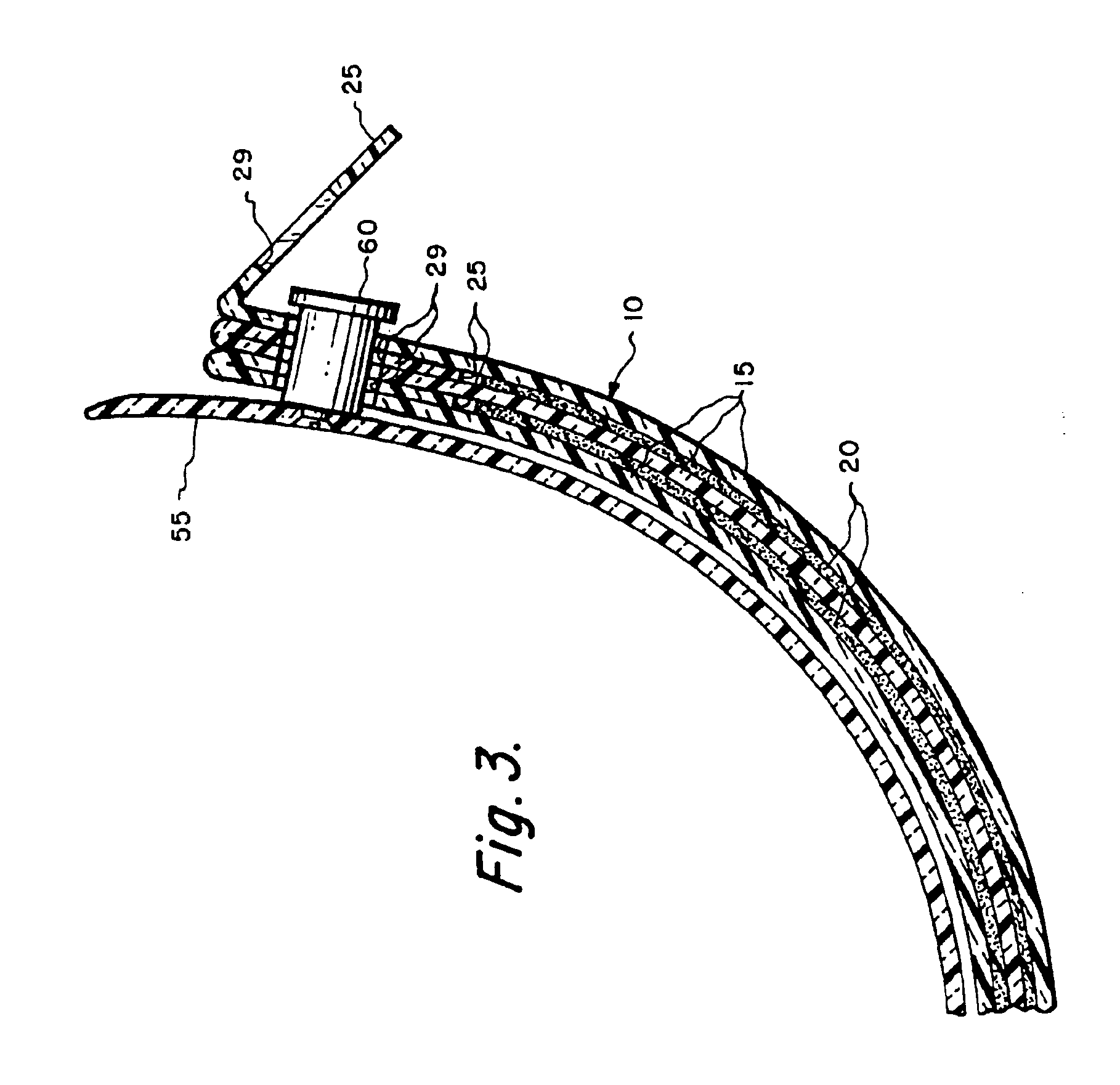Optical stack of laminated removable lenses for face shields, windows, and displays
a technology face shields, applied in the field of optical stacks of laminated removable lenses for face shields, windows, displays, etc., can solve the problems of reducing the visibility of operators, and each transparent lens applied over the face shield itself a hindrance to good visibility, so as to keep the viewing area clean during the course of a ra
- Summary
- Abstract
- Description
- Claims
- Application Information
AI Technical Summary
Benefits of technology
Problems solved by technology
Method used
Image
Examples
Embodiment Construction
The present invention will now be discussed in detail. As stated above, FIG. 4 is a front elevational view illustrating the present invention 10 before it is affixed to the face shield of the helmet. The top view in FIG. 5 illustrates 7 layers of lenses 15 adhesively affixed to each successive lenses. The adhesive layer is numbered 20. The material used to form the lenses is preferably a clear polyester. The lens layers are fabricated from sheets of plastic film sold under the registered trademark Mylar owned by the DuPont Company. The several trademark registrations for the mark Mylar list several types of products sold under that mark, and include polyester film. The type of Mylar used in the present invention is made from the clear polymer polyethylene terephalate, commonly referred to as PET, which is the most important polyester. PET is thermoplastic—that is, it softens and melts at high temperatures. Uses of PET film include magnetic tapes and shrink wrap. The adhesive 20 used...
PUM
| Property | Measurement | Unit |
|---|---|---|
| Thickness | aaaaa | aaaaa |
| Tension | aaaaa | aaaaa |
| Refraction | aaaaa | aaaaa |
Abstract
Description
Claims
Application Information
 Login to View More
Login to View More - R&D
- Intellectual Property
- Life Sciences
- Materials
- Tech Scout
- Unparalleled Data Quality
- Higher Quality Content
- 60% Fewer Hallucinations
Browse by: Latest US Patents, China's latest patents, Technical Efficacy Thesaurus, Application Domain, Technology Topic, Popular Technical Reports.
© 2025 PatSnap. All rights reserved.Legal|Privacy policy|Modern Slavery Act Transparency Statement|Sitemap|About US| Contact US: help@patsnap.com



